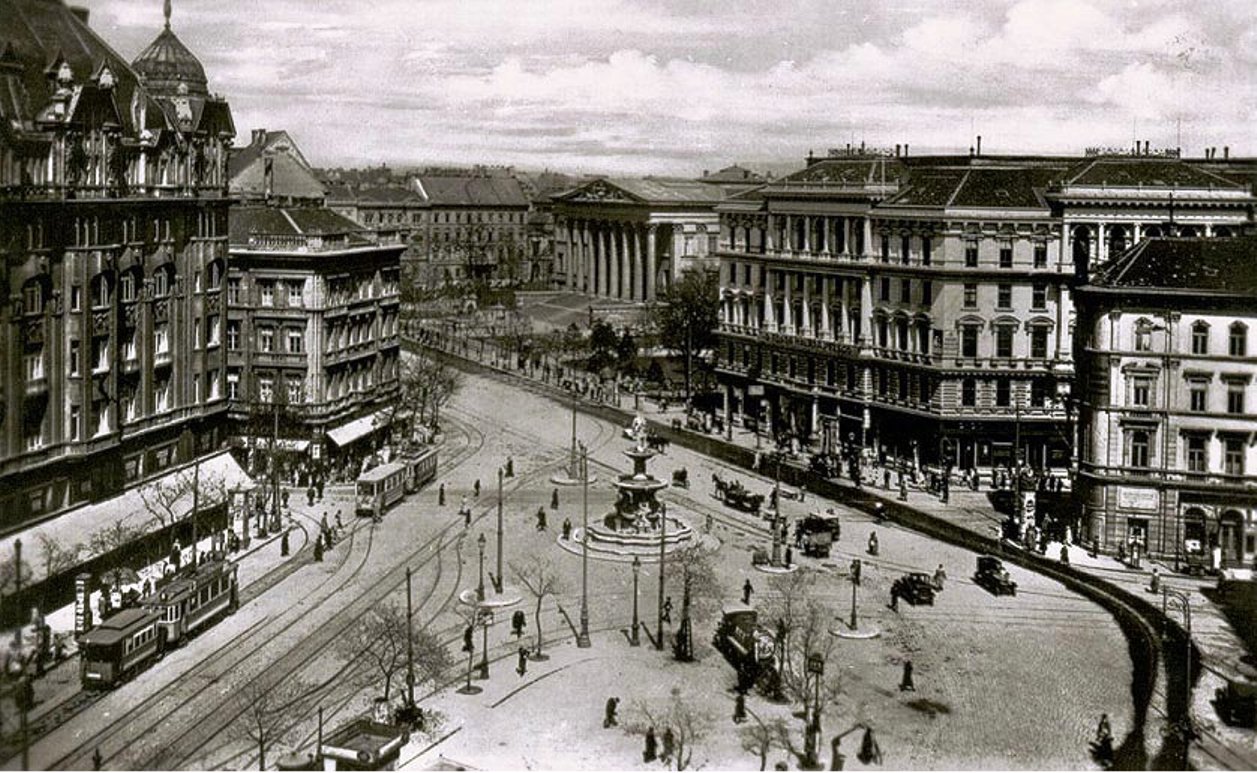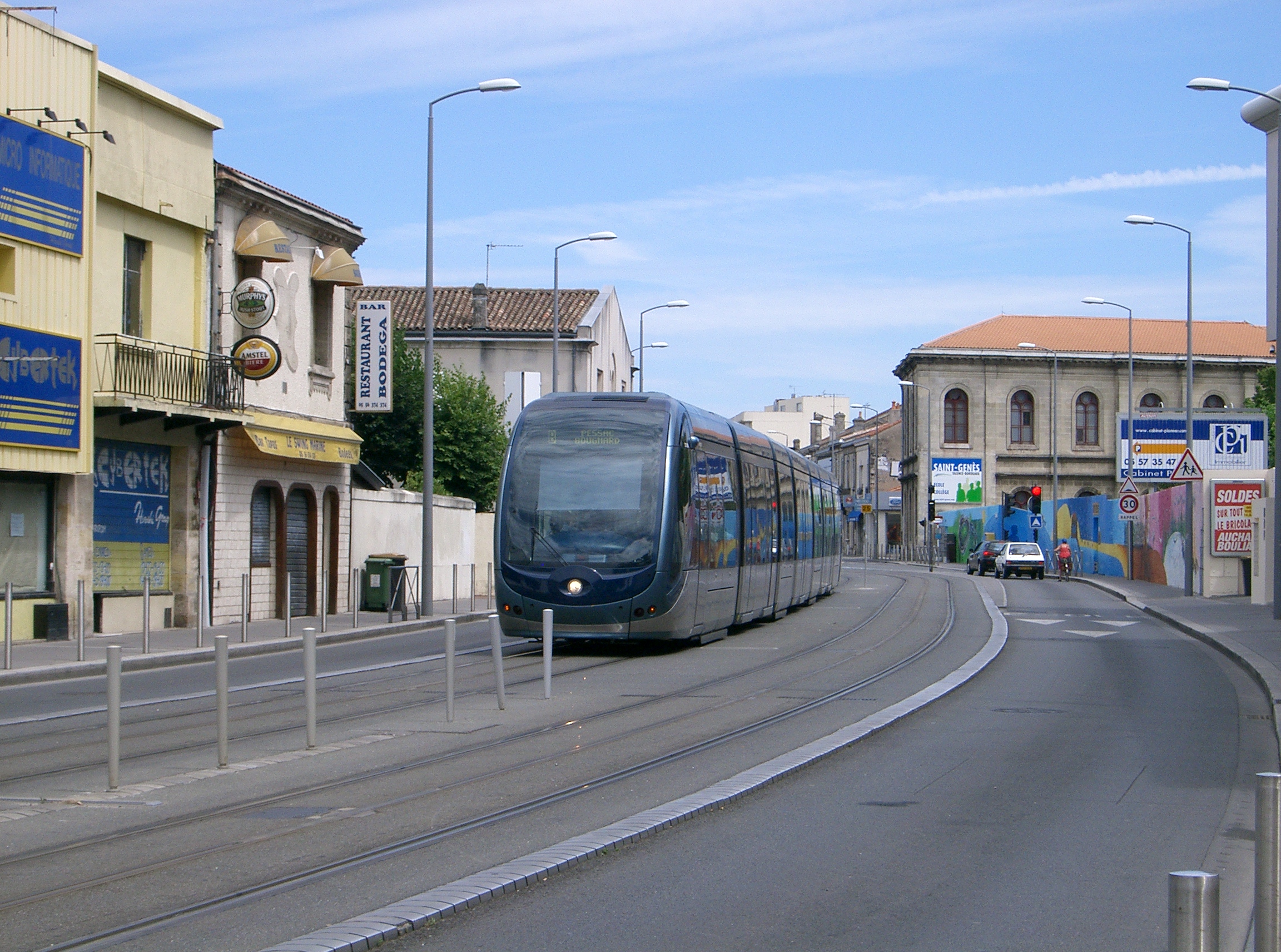|
Trams In Budapest
The tram network of Budapest is part of the mass transit system of Budapest, the capital city of Hungary. The tram lines serve as the second most important backbone of the transit system (after the bus network), carrying almost 100 million more passengers annually than the Budapest Metro. In operation since 1866, the Budapest tram network is one of world's largest tram networks, operating on of total route. , it was composed of 38 lines (26 main lines, and 11 supplemental lines denoted by an ’A’ , ’B’ or ’G’ after the route number), and the Budapest Cog-wheel Railway. The system is operated by ''Budapesti Közlekedési Zrt.'' (’Budapest Transit LLC.’) under the supervision of the municipal '' Budapesti Közlekedési Központ'' (’Budapest Transit Center’). Since 2016 Budapest tram system use the world's longest 9-sectioned articulated tram vehicle CAF Urbos 3/9. History The early days The first horse-tram line in Budapest was inaugurated on 30 July 186 ... [...More Info...] [...Related Items...] OR: [Wikipedia] [Google] [Baidu] |
Budapest
Budapest (, ; ) is the capital and most populous city of Hungary. It is the ninth-largest city in the European Union by population within city limits and the second-largest city on the Danube river; the city has an estimated population of 1,752,286 over a land area of about . Budapest, which is both a city and county, forms the centre of the Budapest metropolitan area, which has an area of and a population of 3,303,786; it is a primate city, constituting 33% of the population of Hungary. The history of Budapest began when an early Celtic settlement transformed into the Roman town of Aquincum, the capital of Lower Pannonia. The Hungarians arrived in the territory in the late 9th century, but the area was pillaged by the Mongols in 1241–42. Re-established Buda became one of the centres of Renaissance humanist culture by the 15th century. The Battle of Mohács, in 1526, was followed by nearly 150 years of Ottoman rule. After the reconquest of Buda in 1686, the ... [...More Info...] [...Related Items...] OR: [Wikipedia] [Google] [Baidu] |
Budapest-Nyugati Railway Terminal
Budapest-Nyugati (western) railway station ( hu, Nyugati pályaudvar), generally referred to simply as Nyugati, is one of the three main railway terminals in Budapest, Hungary. The station is on the Pest side of Budapest, accessible by the 4 and 6 tramline and the M3 metro line. History The station was planned by August de Serres and was built by the Eiffel Company. It was opened on 28 October 1877. It replaced a previous station, which was the terminus of Hungary's first railway line, the Pest–Vác line (constructed in 1846). This building was pulled down in order to construct the Grand Boulevard. The station gave its name to the adjacent Western Square ('Nyugati tér'), a major intersection where Teréz körút (''Theresia Boulevard''), Szent István körút (''Saint Stephen Boulevard''), Váci út (''Váci Avenue''), and Bajcsy-Zsilinszky út ('' Bajcsy-Zsilinszky Avenue'') converge. The square also serves as a transport hub with several bus routes, tram routes 4 and ... [...More Info...] [...Related Items...] OR: [Wikipedia] [Google] [Baidu] |
Continental Europe
Continental Europe or mainland Europe is the contiguous continent of Europe, excluding its surrounding islands. It can also be referred to ambiguously as the European continent, – which can conversely mean the whole of Europe – and, by some, simply as the Continent. When Eurasia is regarded as a single continent, Europe is treated as a subcontinent, and called as European subcontinent. The old notion of Europe as a cultural term was centred on core Europe (''Kerneuropa''), the continental territory of the historical Carolingian Empire, corresponding to modern France, Italy, German-speaking Europe and the Benelux states (historical Austrasia). This historical core of "Carolingian Europe" was consciously invoked in the 1950s as the historical ethno-cultural basis for the prospective European integration (see also Multi-speed Europe). Usage The most common definition of Mainland Europe excludes these continental islands: the Greek Islands, Cyprus, Malta, Sicil ... [...More Info...] [...Related Items...] OR: [Wikipedia] [Google] [Baidu] |
Andrássy út
Andrássy Avenue ( hu, Andrássy út) is a boulevard in Budapest, Hungary, dating back to 1872. It links Erzsébet Square with the Városliget. Lined with spectacular Neo-renaissance mansions and townhouses featuring fine facades and interiors, it was recognised as a World Heritage Site in 2002. It is also one of Budapest's main shopping streets, with fine cafes, restaurants, theatres, embassies and luxury boutiques. Among the most noticeable buildings are the State Opera House, the former Ballet School (under reconstruction for several years), the Zoltán Kodály Memorial Museum and Archives, the Hungarian University of Fine Arts, and the Ferenc Hopp Museum of East Asian Arts. History It was decreed to be built in 1870, to discharge the parallel Király utca from heavy traffic and to connect the inner city parts with the City Park. Its construction began in 1872 and the avenue was inaugurated on August 20 (a national holiday), 1876. Its realization was a blend of the plans propose ... [...More Info...] [...Related Items...] OR: [Wikipedia] [Google] [Baidu] |
Hungarian Academy Of Sciences
The Hungarian Academy of Sciences ( hu, Magyar Tudományos Akadémia, MTA) is the most important and prestigious learned society of Hungary. Its seat is at the bank of the Danube in Budapest, between Széchenyi rakpart and Akadémia utca. Its main responsibilities are the cultivation of science, dissemination of scientific findings, supporting research and development, and representing Hungarian science domestically and around the world. History The history of the academy began in 1825 when Count István Széchenyi offered one year's income of his estate for the purposes of a ''Learned Society'' at a district session of the Diet in Pressburg (Pozsony, present Bratislava, seat of the Hungarian Parliament at the time), and his example was followed by other delegates. Its task was specified as the development of the Hungarian language and the study and propagation of the sciences and the arts in Hungarian. It received its current name in 1845. Its central building was inaugura ... [...More Info...] [...Related Items...] OR: [Wikipedia] [Google] [Baidu] |
Kálvin Tér
Kálvin tér (English: Calvin Square) is a major square and intersection in the city center of Budapest, the capital of Hungary. It was named after the French Protestant Reformer John Calvin (''Kálvin János'' in Hungarian) due to the large Reformed Church located there. The square is located in Pest at the junction of the 5th ''(Belváros-Lipótváros)'', 8th ''( Józsefváros)'' and 9th ''( Ferencváros)'' districts. Roads which converge at the square include the 'Kiskörút' (Inner Circuit, encompassing Múzeum körút ('Museum boulevard') north of the square, and Vámház körút to the south), Üllői út ('Üllő road'), Baross utca (' Baross street'), and Kecskeméti utca (' Kecskemét street'). Being a major thoroughfare and locality, the square is a major transport hub with tram, bus, and trolleybus routes serving the square. The Kálvin tér station on the M3 (North-South) line, and M4 of the Budapest Metro is located here. The Hungarian National Museum is ... [...More Info...] [...Related Items...] OR: [Wikipedia] [Google] [Baidu] |
Overhead Line
An overhead line or overhead wire is an electrical cable that is used to transmit electrical energy to electric locomotives, trolleybuses or trams. It is known variously as: * Overhead catenary * Overhead contact system (OCS) * Overhead equipment (OHE) * Overhead line equipment (OLE or OHLE) * Overhead lines (OHL) * Overhead wiring (OHW) * Traction wire * Trolley wire This article follows the International Union of Railways in using the generic term ''overhead line''. An overhead line consists of one or more wires (or rails, particularly in tunnels) situated over rail tracks, raised to a high electrical potential by connection to feeder stations at regular intervals. The feeder stations are usually fed from a high-voltage electrical grid. Overview Electric trains that collect their current from overhead lines use a device such as a pantograph, bow collector or trolley pole. It presses against the underside of the lowest overhead wire, the contact wire. Current colle ... [...More Info...] [...Related Items...] OR: [Wikipedia] [Google] [Baidu] |
Ground-level Power Supply
Ground-level power supply, also known as surface current collection or, in French, ''alimentation par le sol'' ("feeding via the ground"), is a concept and group of technologies whereby electric vehicles collect electric power at ground level from individually-powered segments instead of the more common overhead lines. Ground-level power supply has been used primarily for aesthetic reasons. During the late 2010s it has become more economical than overhead lines. Ground-level power supply systems date back to the beginning of Tram#Electric, electric tramways, with some of the earliest such systems using #Early systems, conduit current collection. Since the turn of the 21st century, new systems such as the #Alstom APS, Alstom APS, #Ansaldo Tramwave, Ansaldo Tramwave, #CAF ACR, CAF ACR, #Elways, Elways, and others have been introduced which use modern technology to address some of the limitations and dangers of the older systems, and supply power for buses, trucks, and electric cars. ... [...More Info...] [...Related Items...] OR: [Wikipedia] [Google] [Baidu] |
Track Gauge
In rail transport, track gauge (in American English, alternatively track gage) is the distance between the two rails of a railway track. All vehicles on a rail network must have wheelsets that are compatible with the track gauge. Since many different track gauges exist worldwide, gauge differences often present a barrier to wider operation on railway networks. The term derives from the metal bar, or gauge, that is used to ensure the distance between the rails is correct. Railways also deploy two other gauges to ensure compliance with a required standard. A '' loading gauge'' is a two-dimensional profile that encompasses a cross-section of the track, a rail vehicle and a maximum-sized load: all rail vehicles and their loads must be contained in the corresponding envelope. A '' structure gauge'' specifies the outline into which structures (bridges, platforms, lineside equipment etc.) must not encroach. Uses of the term The most common use of the term "track gauge" refers to t ... [...More Info...] [...Related Items...] OR: [Wikipedia] [Google] [Baidu] |






.jpg)

